Week 1: The Age of the Image,
a new reality
The age of the image, the symbolism with our way of expressing human feeling and the way of keeping memories. Technology has given human beings in the 20th-century multiple ways of expression, but these steps of different tools were evolving following the rapid race of technology and capitalism. The creation of the film makes it possible to keep or freeze time in a single frame. This was the beginning of the new human being addiction. When this time was all mysterious and everyone was even scared of what they have seen, believing that was something magical. However, they were just impressed by the innovation of these new technologies that later will be a common thing to have for everyone and accessible. Our century is the time where we have created more images than ever. Adding some interesting names and details to the easy, we got the brownie one of the first cameras invented by Kodak and the Legendary French photographer Henri Cartier-Bresson, who with this camera was the inventor of the famous selfie. Following this, we have the first montage, by Frank Hurley, an Australian photographer, who wants to make his images more dramatic and intense, with his new idea, aligning different film shots of WW1. to summarise the first episode of the image, the idea of the new technology following the taste of humans and the idea of capture time, mention capture continuity system different shots or points of view, and visual languages, rules made up by the people that want to create and give meaning to their images made this new era what it is an obsession with the images.




Frank Hurley, Australian Photographer, the montage pioneer.
Image taken by Frank Hurley and composed by him in the First World War
Age of the Image 1 - A New Reality (2020) Episode 1, James Fox

Task:
Consolidate: Match four Harold Edgerton images each with a VFX shot
Look at the work of Harold Edgerton. Create a gallery of images on your digital sketchbook page from: http://edgerton-digital-collections.org/
After you have done this, can you find four images from a visual effects shot (for example Matrix Bullet time) and pair that image with a similar one from Edgerton.
As everyone wants to see everything through cameras, let's get back to the beginning in this case with the slow-motion or freezing the time/ images. Harold Edgerston and MIT and Artist, that with the strobe light was the pioneer in slow-motion, what later will be one of the biggest references for the bullet effect in movie MATRIX. In this video, we can see the influences of Edgerton's in many VFX shots. Following the basis of his images and slow-motion videos
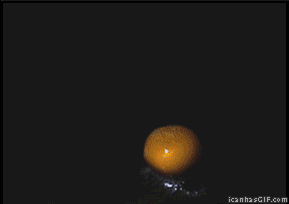

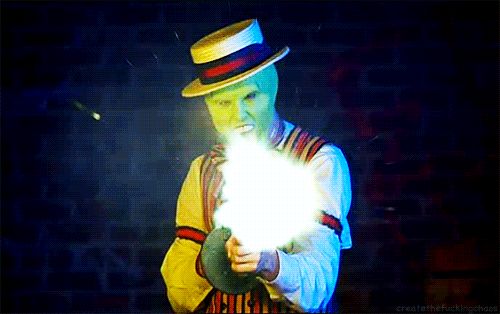
The Mask, 1994
Today (2020) BBC Sounds 28 September August 06:00. Available at: https://www.bbc.co.uk/sounds/play/m000my6p
BBC iPlayer (2020) Age of the Image. Available at: https://www.bbc.co.uk/iplayer/episodes/m000fzmc/age-of-the-image.
Week 2: The Age of the Image 4,
- Fake Views
The Plato Theory, Truth claim and Indexicality
BBC iPlayer (2020) Age of the Image. Available at: https://www.bbc.co.uk/iplayer/episodes/m000fzmc/age-of-the-image
Plato's Cave
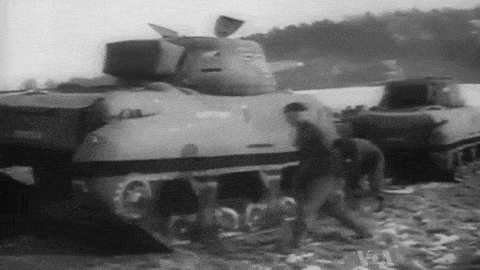

Plato Cave theory talks about the possibility of escaping from your actual reality and gets know the real one. When you can back to bring others to your new reality, this new reality for them could be fake or dangerous. In the case of these poor people that have seen a man leaving this cave returning a getting blind because he left. Plato question the illusion of reality in practice. James says the age of the image has changed people perception of reality by their use with it 24/7. Also, their use of deep fake. 9/11 was unfolded in real-time everywhere around the globe. He also spoke about the Truth Claim, where analogy photography was the time to capture reality. Nowadays, based on our experience as an audience we know images can be manipulated. We now see an image in from of our eyes and we straightaway ask ourselves if the image is real or not. The explanation for this is, that we don’t want to be manipulated, knowing that governments and news are connected. Governments believe they can change the narrative of what is happening in the world in the way they want. Digital photography is not questioning the truth claims, because the present everyone can make up their own narrative. To conclude this, it will be that in the time we live, is impossible not to question what we see, because we have been tricked too many times and now just is the long waiting for this big lie to explode destroying this big montage.
WEEK 3: Faking Photographs: Image manipulation, computer collage and the impression of reality
Investigate: Faking Photographs: Image manipulation, computer collage and the impression of reality.
BBC iPlayer (2020) Age of the Image. Available at: https://www.bbc.co.uk/iplayer/episodes/m000fzmc/age-of-the-image.
Gunning, T. (2004) ‘What’s the Point of an Index? or, Faking Photographs’, Plenary Session II, Digital Aesthetics, 1(25), pp. 39-48
4 Fake Old Pictures

Sadly, one of the 20th century's most recognizable photos is actually a fake too. Although the workers are actually sitting on a beam having their lunch, the background isn't actually a documentary photo from the construction of a skyscraper


William H. Mumler made a name for himself taking photos of famous people that appear to have been joined by "spirits". The truth was exposed when the editor of Waverley Magazin, Moses A. Dow, suggested that spirits allegedly appearing in his pictures were actually Mumler's assistant, Mabel Warren.

Albert Einstein isn't actually riding away from a nuclear test on a bicycle while laughing - it's two separate images that have been spliced together
Depicting US General Ulysses S. Grant, this photo actually consists of three different photos that have been put together to form the image you see above
4 Fake Photoshop Pictures

Bear in the photo is actually captured in a stock photo that can be easily found online.
There's is a weird obsession with moons in viral photos, it seems that if you really want to have a popular photo, just add a moon in the most unrealistic place and there you have it. That's exactly what happened with this photo taken by Mo Aoun.


This iconic selfie of a pilot photographing himself in the air was actually a photo of him when he was safely landed, but it's important to mention, that even on the land, it's a pretty cool selfie!

A photo of a lion strapped onto a machine in order to make the iconic MGM intro of a lion roaring is actually a photo of a lion being diagnosed at the vet's office. Luckily, the lion made a wonderful recovery and is now completely healthy. Also, an interesting fact is that there have been 7 lions that were used to create the MGM intro, the current one, who's name is Leo, has appeared in most of the movies since 1957.
Faked shots from visual effects
I decided to use a video instead of the images because I thought it would be much interested that see the pictures. the video is easy to watch and some breakdowns of the movies and shots in it.
A definition of VFX compositing. What is it and how does it work?
Impression of reality in film thanks to the magic of composition and the compositors. The cinema industry offers the impression of reality supported by some theories, but what is what really makes cinema be a synonym of reality, well it used to be the projection of the elements in from of the camera that was shot at that time couldn’t be faked. Nowadays, things have changed, thanks to technology filmmakers and other artists working in the industry can create the imaginable and make it look real or at least that is what they try. The audience does not believe in this anymore, they know they will be tricked we effect. These effects are the new impression of reality that the public feel, that is what we call the impression of reality, the effects generated in the audience.
Either film reflects the truth of the world (not attractive), or it is a mediated representation of the world (an effect of the truth). Including in the argument, that the language of the film (narrative and visual language) could and will work to achieve a realistic effect.
Compositing is the biggest hero in the race to reach the goal of realism, it isn’t the loss of quality in digital compositing. The control of the depth in the images or frames working in different layers make it much easier to put elements on top of each other to finalise the shot. This composition is made of filmed elements or CGI assessment.
The classic tools that a compositor will use in the job will be rotoscoping, keying, colour correction, creation of multiple effects, overlapping and camera tracking.
The purpose of composting is to summarize all departments inside of VFX into a final shot where all elements combined will work as one and unique sequence that looks real.
-
What are the component parts of the composite? (think VFX plates and CGI elements)
-
How does the composite work?
-
What is the composites purpose?
-
Think about what the composite needs to do to create an 'impression of reality'
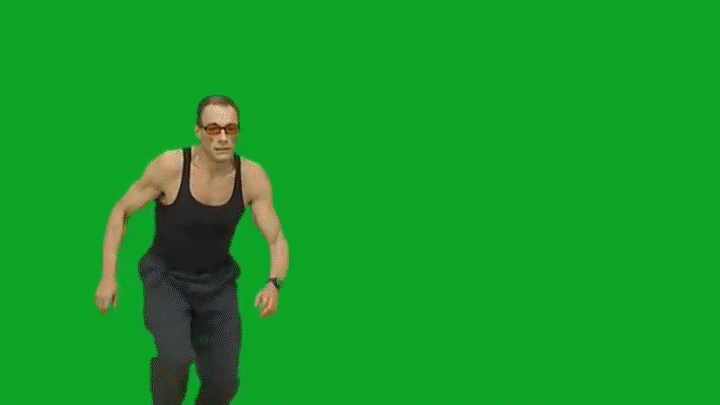
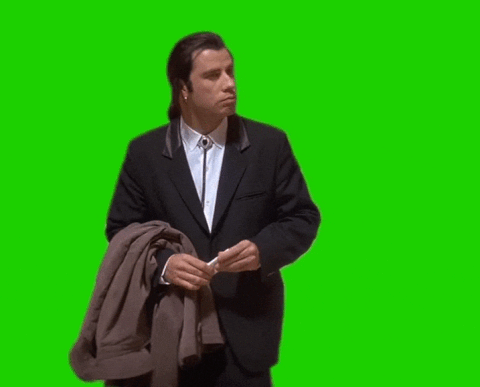
WEEK 4: Photorealism and trends.
In week 4, we had to look at the photorealism CGI and photorealism in visual effects (compositing), been one of the main strengths in many movies.
Why most visual effects suck--but some don't | Wren Weichman | TEDxPenn
-
We became desensitized to VFX.
-
The audience can tell if something isn't photoreal.
-
Photoreal & Motion goes together.
-
Motion: Animation, Simulation and Motion capture.
-
Real human faces are where the audience can see if something is not photoreal.
-
VFX is not just about technical ability but artistic expressions.
-
VFX needs to serve the story.
-
Now VFX makes people disbelief what they are watching.
-
CGI is a tool and should make you forget you are watching a movie.
-
Time is the biggest problem for CGI because more time means more money.
-
Do not rush CGI if you want good CGI.
-
Quality is a measure of time and skills.
-
No film has ever finished, it just get released.
Task: what do you understand photorealism to be or mean.
The perfect example of something photo-real would be the movie The Jungle Book. It is nothing to say, part of the animals are super photorealistic and even the environment. It is the perfect combination of CGI and human understanding of realism.
-
Human faces.
-
Reprint reality.
-
Detailed.
-
Lifelike.
-
Natural.
-
Hyperrealism.

Task: Find four composite examples of CGI photorealism
WOLVERINE
GODZILLA KING OF THE MONSTERS
GRAVITY
AVENGERS INFINITY WAR
CGI PHOTOREALISM.
The photorealism of CG renders :
It is said that digital technologies are leading film into a descending spiral of spectacular superficiality. This is the reason the audience can notice better when something is not real or not, they are used to all these new VFX and technologies, also they know how some of these new technologies and system works to make VFX or CGI characters. Photorealism CGI has been evolving since the beginning of the first CGI, made by Pixar, with TOY STORY. We know now that photorealism does not mean that it is real or try to represent the real thing, photorealism is the construction of the idea of the evolving tech, to make CGI photoreal a big group of artists must make everything work using the most advanced software’s and Renders, (modelling, materials, lighting, and post-processing) the mix of all these elements working perfectly we can reach photorealism CGI. Now everything is more complicated because of the audience, the idea, references, and the history behind must work perfectly too. All this makes to the spectator´s sense of their real-world and replaces it with a fully believable artificial one.
-
Round your edges
-
Use surface imperfections
-
Introduce some chaos
-
Mimic real-world lighting
-
Use a realistic camera angle
-
Create some atmosphere
-
Use lens effects
-
Scale objects correctly
-
Use PBR materials
-
Use photos - for compositing and reference
-
Pay attention to the details
Flueckiger, B. (2015) Special effects: new histories/theories/contexts. Edited by D. North et al. London: Bloomsbury, pp. 78-98.
WEEK 5: Digital Index: Bringing truth into VFX via the Capture of Movement
In week 5, we were looking at the different technologies that make it possible to capture reality as pure as itself. Speaking from my experience in the field, working with capture reality and lidar scanning and some other types of technology the outcome of these methods are very precisely to the real world. Doing props or people using reality capture, I have seen no differences with the real object or person.
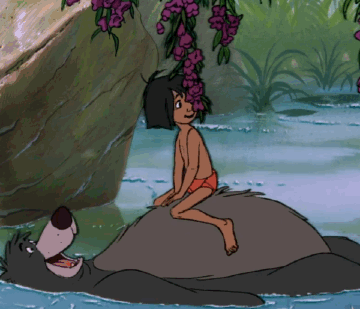
JUNGLE BOOK: KEYFRAME ANIMATION

JUNGLE BOOK: MOTION CAPTURE
What types of capture are used in VFX and why? How is this data captured?
-
Full Body scan: for actors.
-
Props scan: which is a different kind of rig.
-
Lidar scanning: that can be applied for anything but the standards are car, environments, sets, cities.
-
Photogrammetry: it would be used in reality capture.
-
Mocap (Motion Capture): capture the movement of the actor or animals to apply the natural movements to the animation.
-
Motion capture = (movement) Data.
-
Reality capture 3D Scaning = (object or people) Data.
I have also learned from the Data wranglers, that is really important to film every piece of reference on set to have the colour, light, movement, a camera positions, for later on create the virtual camera or track the camera movements, (motion tracking or match moving).
Task: When and for what character might motion capture be used?
Motion capture can be used to place a virtual character within a real scene or to place live actors within a virtual scene with virtual actors, or virtual characters within a virtual scene. Motion capture is being used more and more in films nowadays. Motion capture-based animation is essential for creating characters that move realistically, in situations that would be impractical or too dangerous for real actors
Post comparing Motion Capture to Key Frame Animation.
Lord of the rings: Gollum played by Andy Serkis
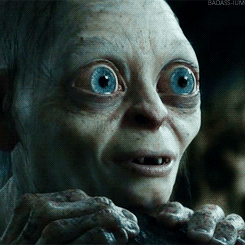
King Kong: played by Andy Serkis
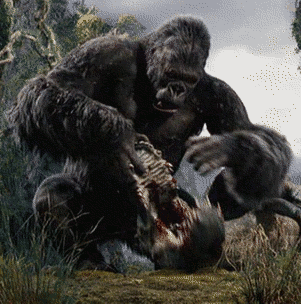
Two different tools with the same purpose inside of the cinema industry, motion capture and keyframe animation. The old ones and most used is the keyframe animation, made by Disney using simple drawings to bring life to their character, later the technique was perfected using real footage. The actor in the footage interprets the role, which later will be printed and used as a reference for the drawing technique, also this could be used to draw the animation on top of the footage to get a better idea of the human movement, as in Snow White and the Seven Dwarfs. This was the inspiration in my eyes for the motion capture, very similar but in this case, it would need many different tech advances to achieve the outcome, this will be a similitude between these two techniques. Motion capture can feed the digital character with indexical movement, when keyframe animation is iconic, it is an animation that represents something like a walk cycle. Motion capture is data and the keyframe is made by hand. Both use live-action, in the case of keyframe live-action footage.
Motion capture is a blend of computer-generated images and material recorded, from reality. It is complex and effective, mocap make charters look realistic is a crystallization of reality because is the real movement. Jackson and Serkis were the pioneers on the field with Gollum and the remake of King Kong, this is a clear example that indexicality persists in the digital age.
I really good example of a keyframe would be in the show I am working on right now His Dark Materials, where the puppeteers used puppets to act next to the actor replacing their demons, ( that is the name given for the animals in the show), that later on will be replaced for the CGI animal by Framestore.
Week 6: Reality Capture (LIDAR) and VFX
In week 6 we have spoken about a recent technology, laser scanning, more than a tech it is a method of 3D scanning( reality capture ). This method will give us a database from the environments, objects and people, basically whatever we want to scan. we have seen in class the Depth-based, but from my experience, I can say that the best two options are Phogrametry and Lidar scan. I have been working as a full-body scanner technician and right now is am working as a lidar technician, my job will be to go to set or environments to scan these, then I will start receiving this data as a point cloud database, where I will start aligning in my iPad, to process later on the data in Cyclone 360 and Cyclone core. Later I will export the new database and a file called E57 to create a 3D model mesh for reality capture. In reality capture, I will work with different things, sets, people, cars, objects, environments. You can also use video photogrammetry.

Clear Angle Studios.




DOROTHY: Head Scanning is unique in the world and just one person play with her is my college Jack
RTC 360 Lidar Scanner

This is one of the trailers we have, each of them has a different name, a name related to an actor that we ad chose in the office in Pinewood where is the head office. Inside a full-body scan X or M series.

This is how works a normal day scanning on a location:
-
Your VFX supervisor will tell you the schedule for the day and which areas you will be covering, sometimes you need to be quick to scan between takes, time is gold.
-
Then you will find a spot wherein case of emergency you need to charge the batteries, normally you will have a spot with the VFX team or data wranglers.
-
Be ready with your tripod and your Leica suitcase with your precious scanner.
A picture I took on set.
A picture I took on a location.
Following the scans, you need to be super focused where you located your scan to not miss any size or part of anything, is like you try to do photogrammetry where you need every side of the object, you need to think in 3D. The third image is how the point cloud database looks.
Aligning my scans, the best way to do it is to create a net, to make it strong and overlapped




How to set up your RTC 360:
-
Open your tripod, the height should be close to your neck.
-
Attach the Leica level that would help you a lot if you are quick, this will be to be practised.
-
Take the scanner carefully from the suitcase, open the lock below it and attach the scanner to the level.
-
Add batteries and Pen drive, where the data will be safe.
-
Turn on the scanner and your iPad.
-
Connect the Ipad to the scanner by wifi.
-
Open cyclone 360 in your iPad and created a new folder with your proyect.

This is my suitcase, here you can see what I see when I opened it to scan.


Scanner, green level, 4 batteries to make it work you need 2, the pen drives, and the charger, in the other side the iPad with cables to charge iPad and batteries.
Blog Post 6 for Assignment 1
My case of study with Clear Angle Studios
Reality Capture is the process of producing a digital 3D model representation of your object, building or site created by scanning it in the real world using static, mobile, and areal laser scanning and/or photogrammetry and the best company in the world doing this is Clear Angle Studios, we use reality capture is for multiple purposes: props, cas, environments, vehicles, sets. Basically, reality capture is capturing the real objects, using photogrammetry or laser scanning with the lidar and its point cloud turning into data, which later will be interpreted in our case with a software call reality capture. Lidar scanning works with a rotatory mirror that sends lasers beams all over the places that will be collected again by the scanner turning this data into a million points, these millions of points is what we call point cloud data. This technology is very useful for the venders to see the sets have an idea of where are they working, for example in the case of His Dark Materials, they ask me to scan multiple sets just full of green screens with markers on them, these scans will help the vendor, in this case, Framestore to have a reference of the markers to project in the green screens. A good example of a bad scan will be scanning a room that is divided for a table and only has been scanned from one side, in the point cloud will be missing so much data from the other side. Other examples of bad surfaces to scan would be shine cars, which will need to be dusted before being scanned, shine cars make the laser not to understand the surface because is reflecting the laser to others direction. The last example would be a porous surface, where the laser will be absorbed by the surface, all that data will be missing. Being a Lidar Technician at Clear Angle studios is an amazing experience, being able to see how the production works and how other departments work between them. Lidar scanning in the future will be able to capture better the movement. This is something that companies still studying. It can be used for camera tracking, light positions, CGI location and much more.
Some tricks that would help anyone to scan for example a field, is used markers on sticks. These markets will help you to align the scans. You should have a minimum of 3 of the 5 that you should have in the same scan. This will give you more strength and overlapping. The overlapping it is the most important part here, you will not like to have your scans with empty holes on the floor because you didn't make enough overlap between scans.
Week 8: Reality Capture (Photogrammetry) and VFX
Assignment 2 Essay Questions and Topics

I have chosen this option two. I believe that my interest in these old technologies and new tech(trends) suit me better to prepare my essay. Although because of my knowledge in the field of 3D. scanning and reality capture, in photogrammetry and virtual productions.
My case study will be focused on multiple studios as The Imaginarium Studios, Clear Angle Studios, ILM ( virtual production). I Will also make a reference two one of the books from level 4 called Inside of VFX, Pierre Grage. on How VFX are connected with continuous progression with technologies and the human ambition to achieve realism.
My case of Study will have:
-
They look in detail at a situation, technology or company.
-
Give real-world examples of application/impact.
-
Draw details of a situation from real life.
-
Show examples of good and bad practices.
-
Illustrate how something works and break down what it is.
-
Throw a new light on a topic.

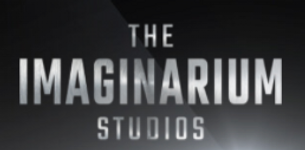

Photogrammetry, Full body scan, Head scan and Props scan




Preparation
Although performers sometimes show up out of the blue, most of the time you will get fair warning when someone
important is on their way for scanning. Performers are often in a hurry and time with them is limited, so doing
everything you can to prepare is very important. Consider the following:
1. If you know who's coming, have the correct appleFACS or want to do a ton of costume variations,
box set up in the rig. You can look up their height you will need a lot of space, so make sure you
on IMDB or ask someone from costume have it.
2. Find out what the costume is like and what it saves you switching exposure/apple box between
3. Check you have all of your cameras each one,
4. Check you have plenty of space on the capture drive. Be prepared, if they suddenly want to do 50
5. If you receive a large number of crowd at once; made of, so that you can try to select the right
organise them by height or by costume colour to exposure beforehand,
The Chat
Chances are that most actors and stunties will have been scanned before. However, you should still explain to them
exactly what's going to happen and what we need them to do.
1. Make sure that makeup and costume are happy
with their final checks before proceeding with
the capture.
2. Do not ask lead cast members who have been
in a million huge CG films if they've ever been
scanned before.
3. Warn them that there will a lot of very fast, very
bright flashes and make sure they have heard you
and understood.
4. Show them how to stand before you tell them
where to look, Have them stand up straight with
their arms at their sides. Ask them to bring their
elbows out sideways and spread their fingers,
Make sure they aren't hunching their shoulders
and that their hands aren't too close or too far
away from their body. As you do this, follow your
own instructions to demonstrate,
5. Point them to the eye-line bar and ask them for a
neutral expression with their eyes open and lips
together. If the eye-line bar is not appropriate for
their height, have them look straight ahead at the
A frame.
6. If they are worried about blinking, explain that as
long as their eyes are open for the initial flash it
isn't a problem.
7. Ask them to place their feet on the foot markers
and stand up straight. Check a head camera on C
or G frame and adjust the performer accordingly.
8. Ask them to keep as still as they can, explain that
we will count them down and once the fire is
over they will need to wait for approximatèly 30
seconds for us to check the take. This is important
in case they leave or prepare for a second look
and we find we need to re-shoot the take.
9. If the take is confirmed to be good, you can let
them leave or inform hair, makeup and costume
that you're ready to move on.
This will be an example of what you need to do when ac actor come in to be full-body scanned or head scanned
Week 10: Simulacra, Simulation and the Hyperreal.

The transition from signs which dissimulate something to signs which dissimulate that there is nothing marks the decisive turning point. The first implies a theology of truth and secrecy. The second inaugurates an age of simulacra and simulation, in which there is no longer any God to recognize his own, nor any last judgement to separate truth from false, the real from its artificial resurrection since everything is already dead and risen in advance. Disneyland is a perfect model of all the entangled orders of simulation. The objective profile of the United States, then, maybe traced throughout Disneyland, even down to the morphology of individuals and the crowd. The Disneyland imaginary is neither true nor false: it is a deterrence machine Set up in order to rejuvenate in reverse the fiction of the real.
"The simulacrum is never what hides the truth - it is the truth that hides the fact that there is none"

"The simulacrum is true"
Week 11: Virtual Filmmaking

Director & Producer of : The MANDALORIAM
ASSESSMENT_02_PRESENTATION














